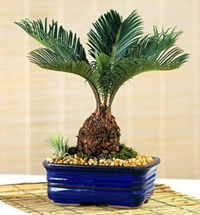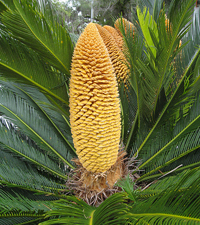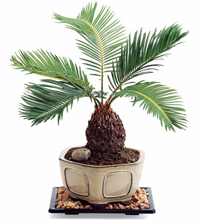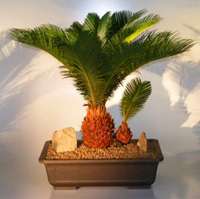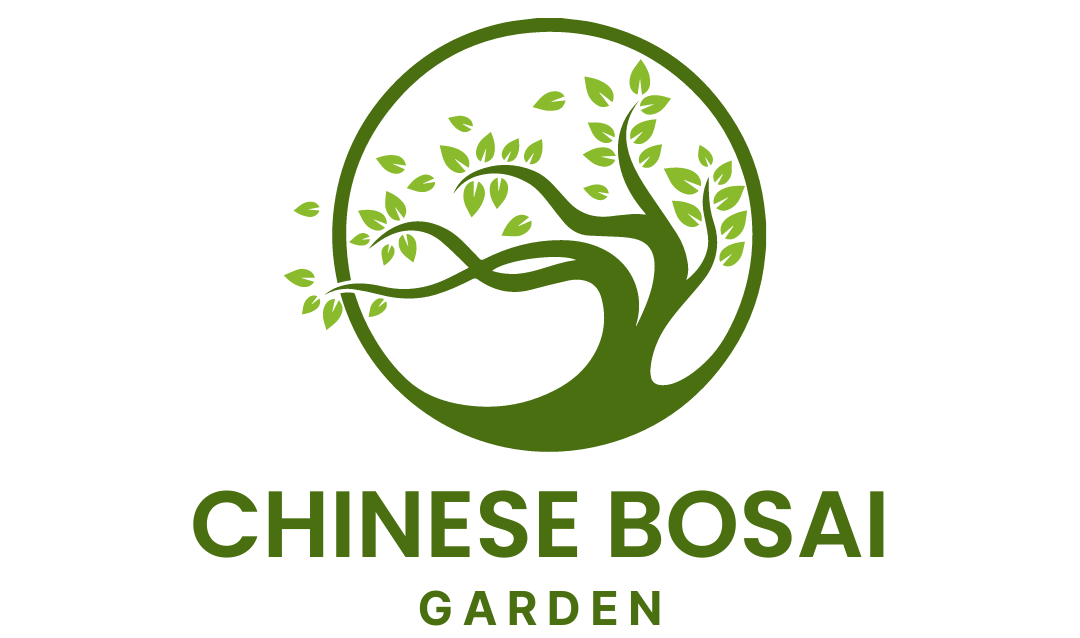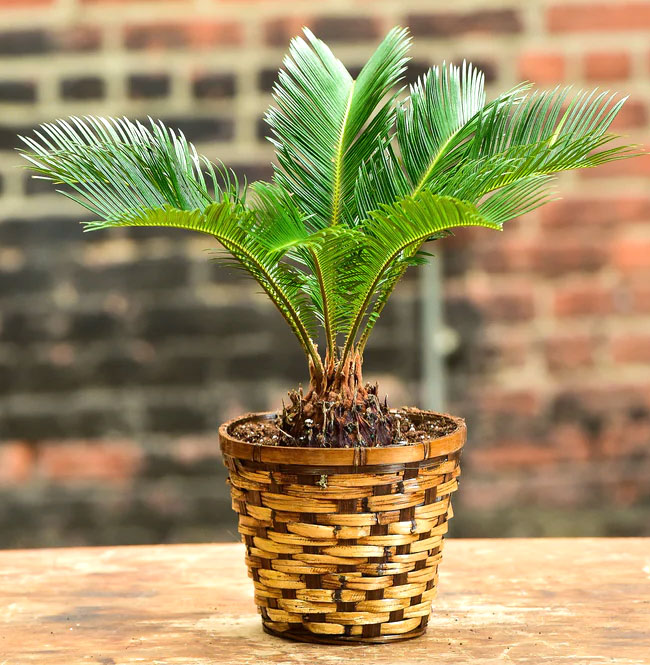
The Sago Palm Bonsai Tree, scientific name Cycas revoluta, is native to Japan. It belongs to a group called cycads.
It is a slow-growing plant that can handle a wide temperature range from 15 to 120F. It is very easy to maintain and will tolerate neglect. Great for indoors.
Additional Information
Family: Cycadaceae
Scientific name: Cycas revoluta
Common Names: Sago Palm, King Sago Palm, Japanese Sago Palm, Funeral Palm.
Origin: Native to southern Japan.
Appearance: It is a very symmetrical plant with an upright trunk and semi-glossy, feather-like, deep green leaves that grow in a circular pattern. It produces a periodic “flush” of new leaves, called a “break”.
Flowering: Sago Palm is dioecious, with the males producing cones and the females producing groups of megasporophylls.
Outdoor/Indoor Use: Both.
Light Requirements: Prefers full sun.
Water Requirements: Allow the soil to dry between watering. Try to avoid overhead watering; this may cause rot and possibly total decay of the plant. Use quick-draining soil mix.
Hardiness: Grows best in USDA Zones 8 – 10. If properly acclimatized, it can grow in Zone 8. Although Sago Palm is a hardy plant, it should be protected from freezing temperatures.
Insects and Diseases: Scale or mealy bug.
Propagation: By seed or by removal of basal offsets.
